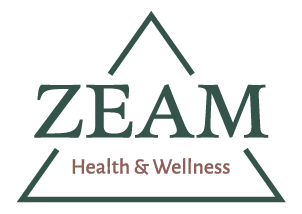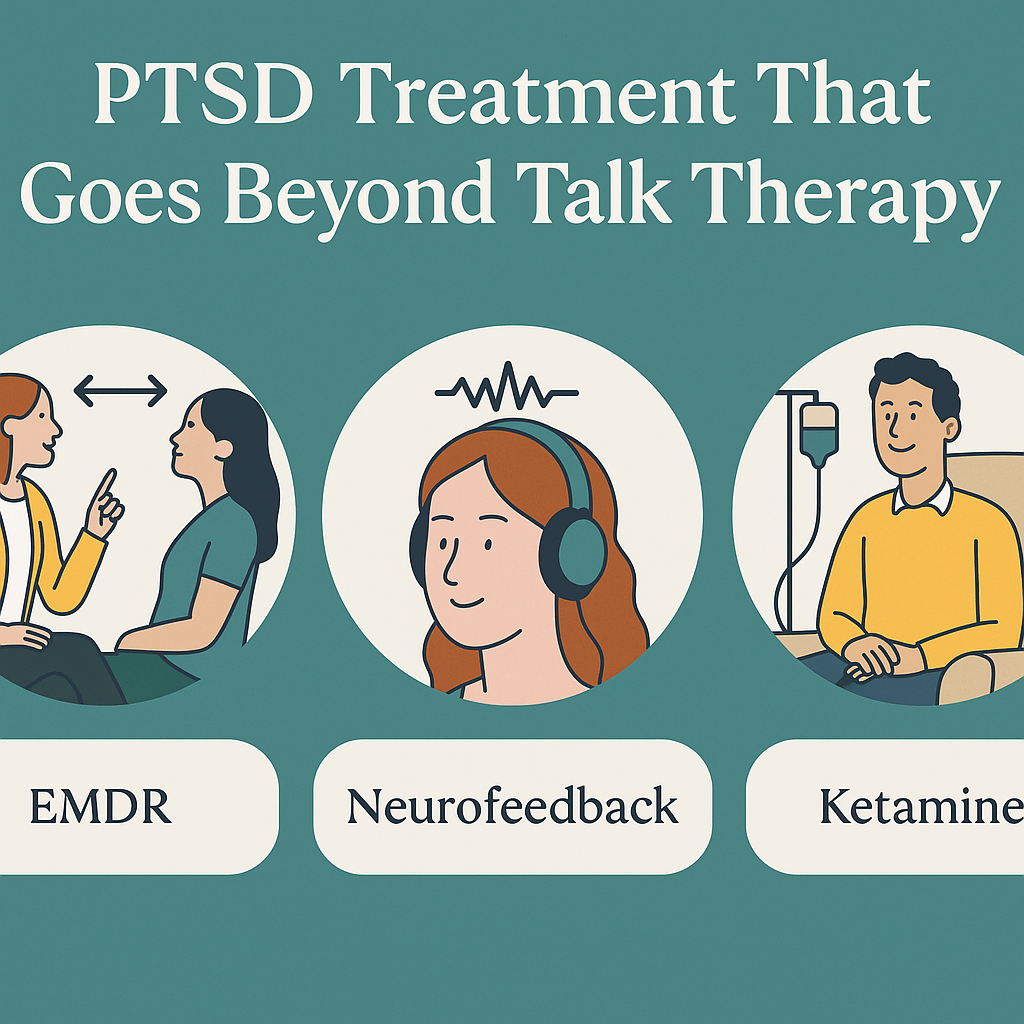Sometimes talking feels like the only thing you can do. You go into a therapy session and share your story again and again. You unpack old wounds, hoping each word makes the pain a little lighter. For many people, this works. It helps them breathe easier, sleep better, and move forward.
But what if it doesn’t? What if, after countless sessions, you still wake up gasping from nightmares? You still avoid certain places. You still feel that tightness in your chest when someone gets too close. It can start to feel like there’s no path out. You thought talk therapy was supposed to be your lifeboat, but instead, you’re still drifting alone.
If this sounds like you, you’re not alone. And no, it doesn’t mean you’re “too damaged” or that therapy failed. It just means you might need a different approach.
Let’s look at options that go beyond words, the treatments that dig deeper and help your brain and body truly heal.
Why Words Alone Don’t Always Work
Trauma doesn’t just live in the mind. It hides in your nervous system. It burrows into your muscles, your gut, and your sleep patterns. Even when your mind understands that you’re safe, your body can still feel like it’s under attack. That’s why some people keep reliving moments they desperately want to forget, no matter how many times they talk them through.
Research shows that traditional talk therapies have dropout rates around 20.9%. Some people feel too exposed. Others find it hard to stay regulated when they have to revisit painful memories over and over. Many feel frustrated because they expect to “talk it out” and move on, but the memories keep pulling them back.
That doesn’t mean talk therapy is bad. It’s helped millions of people. But it’s not the only way.
EMDR Lets Your Brain Do the Heavy Lifting
Eye Movement Desensitization and Reprocessing, or EMDR, might sound like science fiction at first. Once you understand it, it makes a lot more sense.
When you go through something traumatic, your brain sometimes can’t process it fully. It gets “stuck,” like a scratched record repeating the same line. EMDR helps unstick that memory. You focus on parts of your trauma while following a therapist’s hand or a moving light. These side-to-side movements, called bilateral stimulation, help your brain reprocess the memory and file it away properly.
In simpler words, it’s like helping your mind finally finish a task it couldn’t complete before.
Some people feel a little skeptical at first. Studies show EMDR reduces PTSD symptoms significantly and can even work faster than traditional talk therapy. Many feel less overwhelmed by old memories and start to see them as “just something that happened” instead of a constant threat.
Neurofeedback Trains Your Brain to Find Calm
Have you ever wished you could see what your brain is doing in real time? Neurofeedback makes that possible. Using sensors on your scalp, this treatment shows you your brainwave activity as visual or sound cues.
We rarely think about our brain as something we can train, like a muscle. But when you’ve lived through trauma, your brain might stay stuck in high-alert mode. It’s always scanning for danger even when there isn’t any. Neurofeedback helps calm this constant fight-or-flight response.
In one meta-analysis, about 79% of people treated with neurofeedback no longer met PTSD criteria after treatment. Compare that to the 24% improvement seen in some control groups, and it starts to look pretty compelling.
People often report better sleep, more focus, and a stronger sense of control. Instead of feeling like your brain is driving you into panic, you start to feel like you’re back in the driver’s seat.
Ketamine Therapy When You Need Fast Relief
Some people feel like they’ve tried everything. Medications didn’t work. Talk therapy felt like treading water. In these cases, ketamine therapy can be a life-changing option.
Originally used as an anesthetic, ketamine has become known for its rapid-acting effects on depression and PTSD. Unlike typical antidepressants, which can take weeks or months to kick in, ketamine can sometimes ease symptoms within hours or days.
Ketamine works differently from most psychiatric treatment options. It targets glutamate, a neurotransmitter tied to learning and memory. By interrupting certain neural pathways, ketamine can help break the loop of traumatic memory replay.
However, ketamine isn’t a magic fix. It works best as part of a larger plan, ideally one that includes therapy or other supportive treatments. But for people feeling truly stuck, it can offer a spark of hope.
Bringing It All Together: Your Personal Roadmap
What’s the common thread among EMDR, neurofeedback, and ketamine? They each go beyond talking. They engage your brain and body in ways words can’t always reach.
Some people might need a mix. Maybe EMDR to finally process that core traumatic memory, neurofeedback to retrain your stress responses, and ketamine to break through the toughest symptoms. It all depends on your story, your biology, and your needs.
Healing from PTSD isn’t about finding the “right” single treatment. It’s about building a toolkit that works for you. It might mean trying something that sounds strange at first. It might mean stepping outside your comfort zone.
Why Zeam?
If you’re ready to explore these options in a space that feels welcoming, warm, and deeply human, contact Zeam Health & Wellness. We believe healing should never feel one-size-fits-all. Our team listens first, then builds a plan with you, not for you.
We offer EMDR, neurofeedback (through trusted partnerships and referrals), and ketamine therapy as part of a larger, personalized psychiatric treatment approach. We know trauma recovery is messy, personal, and deeply human. We respect that.
When you’re searching for PTSD treatment near you, it’s about more than just finding a clinic. It’s about finding a team that truly sees you. At Zeam, you’ll find partners in your healing journey in Sacramento, Folsom, and Roseville, ready to help you move beyond words and toward real, lasting change.
Your next chapter doesn’t have to look like your past. Let’s write it together, one step, one breath, one new beginning at a time.




